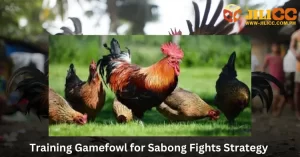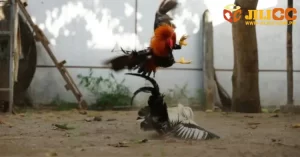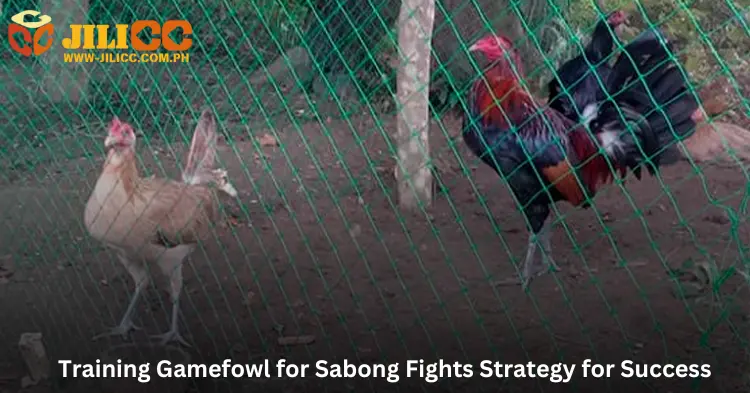Training gamefowl to set them up for the sabong fights is an essential process. This may be accounted as the most crucial process in any match outcome. A well-trained and well-conditioned gamefowl has more chances of triumph in the arena, which makes preparation vital in the sport.
This guide will take into training Gamefowl for Sabong Fights strategy for success, including conditioning strategies, which will help enthusiasts maximize their gamefowl’s performance and become ready for the challenge.
Below, Jilicc will explore these key elements and provide a comprehensive training gamefowl for sabong fights.
The Importance of Conditioning in Sabong Fights
Gamefowl conditioning is the most important thing in training. A well-conditioned rooster won’t just be stronger and faster but will also have better stamina, which is all important in a long, intense sabong fight. Conditioning will help your gamefowl develop the physical and mental strength it needs to dominate competition.
Conditioning Key Aspects
- Building endurance: The gradual increase in working out improves the stamina of gamefowl.
- Weight and Resistance Training: Utilize weight training to develop muscles needed for hard strikes.
- Mental Toughness: Your gamefowl gets accustomed to the fight environment, and during real matches, it will be cool and composed.
The 21-day gamefowl conditioning program is one of the most popular methods, where the main emphasis is on gradually building up the physical and mental aspects. By the end of this program, your rooster should be fully conditioned to perform to its fullest ability.
Training Gamefowl for Sabong Fights Strategy for Success

Training Methods For Successful Gamefowl
To win in sabong, your gamefowl has to be well-trained both in offense and defense. There are certain training techniques implemented for a gamefowl to enhance its fighting skills, particularly in reflex action, the strength of an attack, and fighting defense.
Offensive Training
- Spur drills: The common spur drill will definitely improve the accuracy and timing of attacks, making your rooster deadlier in the ring, a crucial part of training gamefowl for sabong fights.
- Wing Flapping Exercises: These are exercises that build up strength in the wings, increasing the game fowl’s ability for agility in the air and the delivery of effective attacks.
Defensive Training
- Dodging and evasion: teaching your gamefowl how to evade strikes is critical for keeping it in a fight longer. Improve its evasion techniques with controlled sparring sessions.
- Body Coordination: Train your gamefowl to develop its body coordination in order to enhance the agility of movements and quick response for defense against aggressive opponents.
Thus, a combing of offensive and defensive training will make your gamefowl adaptable and resilient, hence giving it the skills to win.
Proper Feeding and Nutrition for Gamefowl
Training is important, but feeding and nutrition play a key role in your gamefowl’s overall performance. A balanced diet will ensure that your rooster gets the energy and strength needed to excel in sabong matches.
Optimal feeding regimen
- High-Protein Food: Gamefowl must have protein to be muscularly strong. Provide them with a high-protein diet made up of grains, beans, and animal proteins daily.
- Supplements: Vitamin and mineral supplements will help improve the health of your gamefowl and help you recover from training sessions.
- Hydration: It is an important factor that keeps your rooster happy and well hydrated, adding to his success, especially in conditioning and heavy training.
Proper feeding with an appropriate nutrition plan put together will keep your gamefowl healthy, strong, and ready for fight action.
Sparring Sessions for Real Fight Simulation
Sparring is continuous training for gamefowls in preparation for sabong fights. This is a mock fight to get your gamefowl accustomed to the tension and adrenaline one normally experiences during an actual fight. Controlled sparring will allow you to see, in safety or safety, the strong and weak points of your rooster.
Benefits of Sparring
- Improves combat skills: Sparring develops the real offensive and defensive skills of gamefowl in practical life.
- Gives Confidence: Exposing your gamefowl to sparring makes them confident and not easily traumatized during an actual fight.
- Monitors Progress: Sparring sessions shall be held to witness the progress of your rooster and shall challenge you to adjust its training if necessary.
Sparring your gamefowl a number of times during the training process is advised, provided that it is not too frequently, in order to avoid injury or fatigue.
Rest and Recovery: The Often Overlooked Element
While training and conditioning are paramount, rest and recovery are equally important. Giving your gamefowl enough time to rest ensures that their muscles repair and grow stronger. It is for this reason that overtraining, giving way to injuries and reduced performance, should be avoided; you must balance high-intensity training with enough downtime.
Recovery Tips
- Massage and Therapy: Easy massages relieve the tension of muscles and speed up the recovery process after hard trainings.
- Sufficient Sleep: just like any other athlete, gamefowl need plenty of rest to keep their performance at an optimal level.
- Monitoring Fatigue: If your gamefowl appears to show any signs of exhaustion, ease off from high-intensity training to prevent permanent damage.
Resting your gamefowl will get them ready for the best performance in case of a sabong fight.
Mental Conditioning: Setting Up for the Fight
Besides physical conditioning, your gamefowl must also be psychologically primed for the fight. Get your rooster accustomed to the arena environment, crowd noise, and stress brought about by handling so that they will remain calm and focused during the fight.

Mental Conditioning Techniques
- Simulate Fight Conditions: This will help the gamefowl get familiar with the actual fight ring conditions, reducing anxiety and nervousness.
- Gradual Noise Exposure: Allow your rooster to get exposed to the fight arena by promoting gradual exposure to crowds and other loud, distracting noises.
- Building confidence: Sparring and practice fights are very instrumental in building your rooster’s confidence, which is also important in overcoming opponents.
This will mentally prepare your gamefowl for the sabong fights, a combination of physical training with mental conditioning.
=> Read more: Online sabong effective tips at Jilicc.
Summary Training Gamefowl for Sabong Fights
Training gamefowls for sabong fights calls for an appropriate approach-from proper conditioning to focused training techniques, appropriate nutrition, and mental preparation. With these methods, you are well assured of presenting a fully prepared gamefowl, having followed the best practices in training gamefowl for sabong fights, that will surely dominate the arena.


